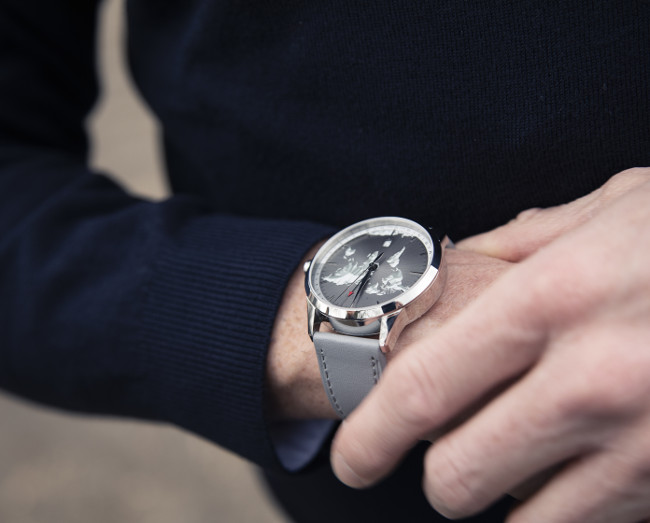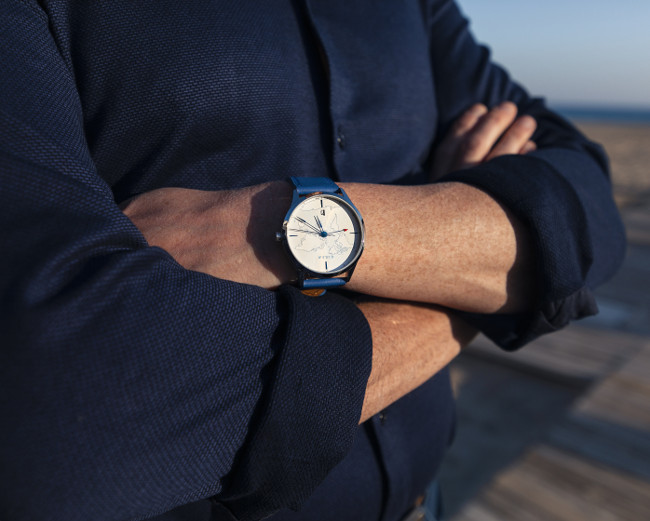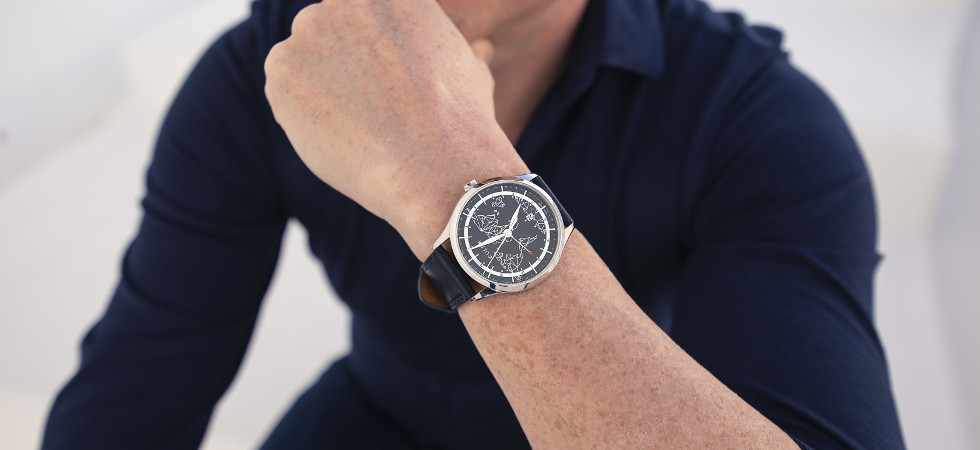By Matthew Cule, Founder of CuleM Watches
The Swiss watch industry has dominated ever since the 1800s when farmers began assembling handcrafted mechanical watches during harsh winter months. Today Swiss watches are synonymous with luxury and prestige. But can the Swiss watchmaking industry survive?
Technology
The release of the Apple watch, and the large array of other designs that have followed suit, has revolutionized watchmaking for the first time in centuries. Why would you wear a watch that simply tells the time when a smartwatch can answer your calls, text your friends and track your fitness goals?
And yet for traditional and new watch collecting aficionados, a smart watch is the equivalent of a factory van to a prestigious car collector – it misses the point entirely. The love affair with Swiss-made mechanical watches is one that can be passed on from generation to generation, with quality that will last a lifetime.

Thus, classical watchmakers have an opportunity to capitalize on and appeal to an emerging market of watch collectors: a generation that grew up with technology and rejects its omnipresence. As mindfulness activities such as yoga and meditation rise in popularity, so too do the low-tech, slow tech, neo-luddite and tech-free movements. A growing swathe of people reject wearables that ‘ping’ us away from the present moment. Time is a treasure, and while a watch can keep time, it shouldn’t control it.
Although the watches may remain classical, the buying experience is changing. Consumers have come to expect a curated, technology-driven discovery and buying experience; for example, a magazine advert can now include augmented reality (AR) links so if you hold your phone over a photo, an immersive video about the watch can begin to play. At CuleM, we’ve developed an app called Try On CuleM, allowing users to try on all the watches in our first World GMT Collection from their desk or dining room table. By utilising new technologies watchmakers can reach new, wider audiences, and can help consumers ‘try on’ a watch – even if they are nowhere near a retail outlet. This can lead to increased sales and help a traditional brand reach a tech-savvy audience.
Innovation
Season after season, classical watchmakers release a new edition of a vintage watch – “best-selling vintage watches reimagined.” However, mature brands can no longer afford to play it safe as independent watchmakers like Akrivia and Singer Reimagined challenge the likes of Rolex and Omega.
Although the Swiss watchmaking industry is full of staggeringly creative and talented people, they often work for organisations driven by the bottom line and relying on their reputation and heritage – not their innovation. I believe that an overreliance on profits translates into lost creativity and a tired routine of re-releasing best-selling models.

Unlike the technology industry, traditional Swiss watch brands lack novel curiosity and innovation. For watchmaking talent, even a few hours a week focused on creativity and lateral thinking can lead to an unveiling of new and innovative designs that can transform a brand, and its earning potential.
Watch brands that seize the opportunity of making the past more relevant to the present are most likely to cement their place in the industry and its future. For instance, we worked with veteran designer Damien Ummel to challenge and evolve the design standards of a standard GMT travel watch. CuleM’s inaugural GMT World Timers solve the historical inaccuracy of travel watches for the first time, displaying the correct time in 24 time zones – an essential feature for the globetrotters of our generation. By looking to the future, rather than to the past, the watch industry has an opportunity both to remain relevant and to reach new consumers. By constantly looking backwards at design, it will fail to achieve either.
Artificial intelligence (AI)
The power of artificial intelligence (AI) to drive intelligent marketing is already beginning to change the watch industry. Emotional Analytics (EMO), a Singapore-based start-up uses artificial intelligence to group data from billions of social content updates into topics of interest by mapping out the emotional engagement with each topic.
This insight can help ensure data-driven growth for industry players. For example, EMO recently studied new watch brands with a price point below $500. This revealed insights that watch brands can capitalise on to ensure they are creating watches that people actually want. For example; people have a strong preference for Swiss automatic watches, like diving, pilot, and dress watches; they prefer 42mm watches or small 38mm watches and are neutral about 40mm watches; nato and rubber straps are the most popular; and the favourite colours are blue and black. This kind of insight can help reduce the risks when launching a new watch – and enables a brand to combine innovation with design aspects that consumers want.
Baselworld has long been the most important event of the industry’s calendar, yet many independent watch brands are choosing to forego the show in favour of investing in contemporary online marketing channels. Exhibitions need to embrace the future and new technology if they are to remain relevant and attract the visitors that will make the cost of exhibiting worthwhile.

Unfortunately for Baselworld, it is not the only industry player which can offer behind-the-scenes access to new watch innovations and releases. Social media influencers, for instance, can target millions of people in a way that can be tracked and analyzed for impressions, engagement, and efficiency. Therefore, Baselworld must now reconcile its iconic existence connecting passionate collectors and watchmakers with novel forms of marketing and technology.
For instance, it might consider live streaming more of its sessions, or enabling exhibiting watch brands to host sponsored webinars for global audiences. Many conferences are selling to an online audience as well as the offline visitors; opening themselves up across the globe to virtual visitors. Leveraging AI and new innovations in communications technology, Baselworld can ensure its offline event generates a wealth of digital data. In so doing, Baselworld may be able to offer independent brands actionable insights from one of the most valuable microcosms of the watch industry.
An investment within reach
Luxury watches combine high-end Swiss craftsmanship and timeless design into a desirable object that will stay with collectors for decades to come.
Although price points for Swiss-made automatic watches can exceed 100,000 euros, watch collecting is no longer an investment beyond reach. Advancements in manufacturing and factory-direct retail business models have opened up luxury watch collecting to new markets.
These business model innovations are not about cutting costs or quality – it’s about finding new, innovative ways to sell direct to customers, eliminating traditional retail outlets with large mark-ups, and delivering the savings to the customer.

At Culem for example, we looked at how to cut out the retailer and sell direct from the factory and thus launched on Kickstarter. We did this because we wanted to ensure that everyone, not just those with six-figure salaries, had access to the ultimate Swiss-made luxury GMT World Timer, and so we could build a global community of watch collectors and world travelers.
By looking at innovative ways to connect with customers, and reduce costs without compromising on design and quality, there is an opportunity for start-up brands to create another tier in the watch collector market, attracting new buyers with a slightly lower price-point.
There will always be a place for the very high-end watches like Vacheron Constantin or Laurent Ferrier, but micro-brands in the 2,000 to 5,000 euro retail price point will be fierce competitors as consumers seek value, relevance, and an alternative to the status quo.
ABOUT THE AUTHOR
Matthew Cule is a passionate collector of watches and founder of CuleM Watches, an independent luxury travel watch brand. Culem’s World GMT collection of Swiss made dual time, automatic watches are designed for people who love to travel. CuleM believes there is nothing more meaningful and amazing than travel – and no object more special than a watch, so each watch is a masterpiece, a work of art and the perfect travel companion.






















